Indian Polity: November 2023 Current Affairs | Current Affairs & General Knowledge - CLAT PDF Download
Postal Ballots and EVM
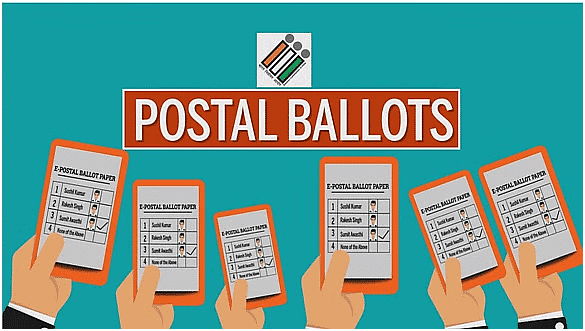
Context
In a recent development, political parties in Madhya Pradesh have submitted a complaint to the state's Chief Electoral Officer. The complaint alleges the manipulation of postal ballots within the strong room and raises doubts about the effectiveness of Electronic Voting Machines (EVMs).
- However, District Election Officer explained that the strong room was opened by the assistant returning officer with prior notice to representatives for ballot sorting, not counting.
What are the Postal Ballots and Journey of EVMs?
- Postal Ballots:
- Postal ballots offer a voting option for specific groups, including service voters, absentee voters (such as those above 80 years, individuals with benchmark disabilities, or those affected by Covid-19), voters on election duty, and electors under preventive detention.
- Eligible individuals, upon completing required forms, receive postal ballots from the Returning Officer (RO) either by mail or at a facilitation center, particularly in the case of election duty voters.
- EVM’s Journey from Checks to Storage:
- EVMs undergo a thorough process before reaching polling stations, involving first-level checks and randomization exercises.
- Following these checks, the machines are handed over to the ROs in accordance with guidelines outlined in the Election Commission's (EC’s) latest manual issued in August 2023.
- After the completion of voting, EVMs and Voter-Verifiable Paper Audit Trails (VVPATs) are escorted back to collection or reception centers, where they are securely stored in strong rooms.
- The EC manual mandates informing all candidates, who are allowed to send their representatives to oversee the security arrangements during storage.
- Security Measures and Storage of EVMs:
- The journey of EVMs involves rigorous security measures, including armed escort and storage in air-conditioned strong rooms.
- Strong rooms function as secure locations for EVMs until polling day, ensuring the integrity and confidentiality of the voting process.
- Political party representatives contribute to overseeing the storage process, adding an additional layer of transparency to the electoral system.
What is the Procedure for Postal Ballots and Absentee Voters?
- Postal Ballots’ Procedures:
- According to EC instructions, the facilitation centre in-charge handling postal ballots is required to open the drop box daily in the presence of party and candidate representatives.
- Each constituency's ballots are placed in a large envelope or cotton bag and then sent to the RO at the end of each voting day.
- The RO assumes custody of these bags, storing them securely in a designated "special strong room."
- Absentee Voters:
- For absentee voters, Booth Level Officers (BLOs) deliver ballot form to the electors' homes. BLOs return within five days of the election notification to collect the filled-in forms, submitting them daily to the ROs.
- Essential services personnel among absentee voters can utilize special postal voting centres, conducting voting for three consecutive days before polling day. The packets of postal ballots from these centres are sent to the RO at the end of each day.
- Secure Handling and Counting Preparations for Postal Ballots:
- In cases where votes are to be counted at a location other than the RO's headquarters, a day before counting, the postal ballots are transferred to another strong room at the counting centre.
- This meticulous process ensures the secure handling, documentation, and eventual counting of postal ballots in adherence to electoral guidelines.
What are the Different Measures to Secure EVMs?
- Functional Check:
- The machines undergo a thorough functional check involving cleaning and clearing of earlier results.
- Inspection of switches, buttons, cables, and latches is conducted to identify any potential damage.
- Random Check:
- A mock poll is conducted on 5% of the total EVMs designated for a poll.
- Approximately 1,000 votes are polled, and result printouts are shared with representatives from various political parties.
- Throwing the Dice:
- EVMs are randomly placed in constituencies and booths, making it challenging to determine their specific locations.
- In the first round, EVMs are randomly allocated to a constituency, followed by randomization and allocation to a polling booth in the second round.
- A Dry Run:
- Before the actual poll commences, a mock poll with a minimum of 50 votes is conducted in the presence of candidates or their agents.
- The mock poll is closed, and the results are displayed, with various checks performed on poll day by polling agents, observers, and central paramilitary forces.
- Safe and Secure:
- EVMs are placed in their designated carrying cases and sealed securely.
- Transported back to reception centers under armed escort, the machines are stored in strong rooms to ensure their safety and security.
- Increasing the Existing VVPAT Verification Rate:
- The Supreme Court's directive to increase the existing VVPAT verification rate from one to five random EVMs per Assembly constituency or segment aims to address concerns about the integrity of counting via EVMs.
Special Category Status
Special Provisions in India’s Federal Structure for Special Category Status
The unique nature of India's federal structure is exemplified by the special treatment granted to different states under the Special Category Status. These provisions were introduced to accommodate variations in sizes, populations, as well as social and historical contexts. Article 371 guarantees special provisions for states such as Andhra Pradesh, Goa, Gujarat, Maharashtra, Sikkim, and Telangana.
What Are the Criteria for Special Category Status in India?
Recommendations of the Fifth Finance Commission
- Introduction of Special Category Status: In 1969, the Fifth Finance Commission recommended the establishment of Special Category Status to benefit specific backward states characterized by hilly terrains, strategic international borders, and economic and infrastructural backwardness.
- Requirements for Special Category Status
- Hilly and Difficult Terrain: States seeking Special Category Status must have challenging topography.
- Low Population Density and/or Tribal Population: Eligible states should exhibit either low population density or a significant tribal population.
- Strategic Location along Borders: States in consideration must be strategically located along borders with neighboring countries.
- Economic and Infrastructural Backwardness: Eligibility requires states to demonstrate economic and infrastructural underdevelopment.
- Non-Viable State Finances: States seeking Special Category Status must exhibit a non-viable nature of state finances.
States with Special Category Status: Unique Provisions and Telangana’s Status
Special Provisions for Unique Contexts
- Northeastern States: Special provisions predominantly apply to northeastern states, including Assam, Nagaland, Arunachal Pradesh, and Mizoram.
- These provisions arise from their substantial indigenous tribal populations, unique histories, and cultures.
- Hilly States and Others: Special provisions are also applicable to hilly states such as Himachal Pradesh.
- Status to Telangana: Telangana, India's newest state, obtained special status due to its separation from Andhra Pradesh, which resulted in an adverse financial impact.
What Benefits Do States Gain from Special Category Status?
- Centre Sponsored Scheme: Under this Special Category Status, the government pays 90 per cent of the funds in schemes that the Centre sponsors.
- Regular States: Regular states get 60 per cent to 75 percent of the fund from the Centre under the same schemes and they have to manage the rest.
- Carry Forward Provision: In case of unspent money, the states with SCS have the provision to carry it forward.
- Tax Rebates: These states also enjoy a significant concession on excise, customs duties, income tax, and corporate tax.
The Constitution Day
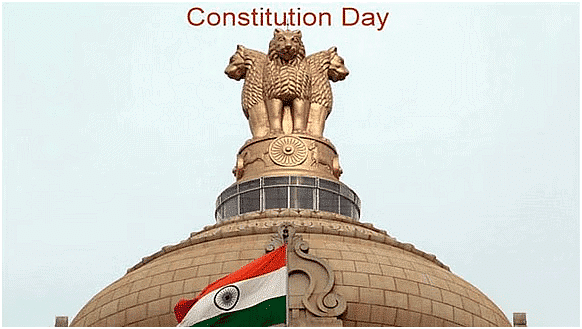
About Constitution Day
- Adoption of the Constitution: On November 26, 1949, the Constituent Assembly adopted the Constitution of India.
- Establishment of Constitution Day: In 2015, the Ministry of Social Justice and Empowerment declared November 26th as 'Constitution Day' to commemorate the adoption of the Constitution.
- Significance of Constitution Day Celebration:
- Upholding Democratic Principles: The Constitution, a sacred document in a democracy, serves as the foundation for the functioning of parliamentary democracy, upholding democratic principles.
- Guiding Light for Law-Making: The Constitution acts as a guiding light for law-making in the country and places checks on the powers of the state.
- Protector of Citizen Rights: It serves as the supreme document, safeguarding the rights of citizens.
- Defining Political Structure: The Constitution outlines the political structure of a country.
- Responsibilities of State Organs: The Constitution defines the three organs of the Indian state – the Executive, the Legislature, and the Judiciary, empowering them while demarcating their responsibilities.
About Constitution of India
- Framing Authority: After gaining independence, the Constituent Assembly, established under the Cabinet Mission Plan of 1946, took on the responsibility of drafting the Constitution of India.
- Formation: Following its establishment, the first session of the Constituent Assembly was presided over by Dr. Sachhidanand Sinha, the oldest member, serving as the Provisional President. Dr. Rajendra Prasad was later elected as the permanent president on December 11, 1946.
- Committees: The Constituent Assembly organized 13 committees to frame the constitution, with the drafting committee, chaired by Dr. B R Ambedkar, playing a key role.
- Adoption of Constitution: The Constitution was adopted on November 26, 1949, with subsequent amendments. It officially came into effect on January 26, 1950.
- Features of Indian Constitution:
- Length: The Indian Constitution holds the distinction of being the world's longest written Constitution, comprising 395 Articles, 22 Parts, and 12 Schedules.
- Written Material: Crafted in calligraphy in both English and Hindi, the Constitution was entirely handwritten by the artists of Shantiniketan, with Prem Behari Narain Raizada serving as the chief calligrapher.
- Inspiration
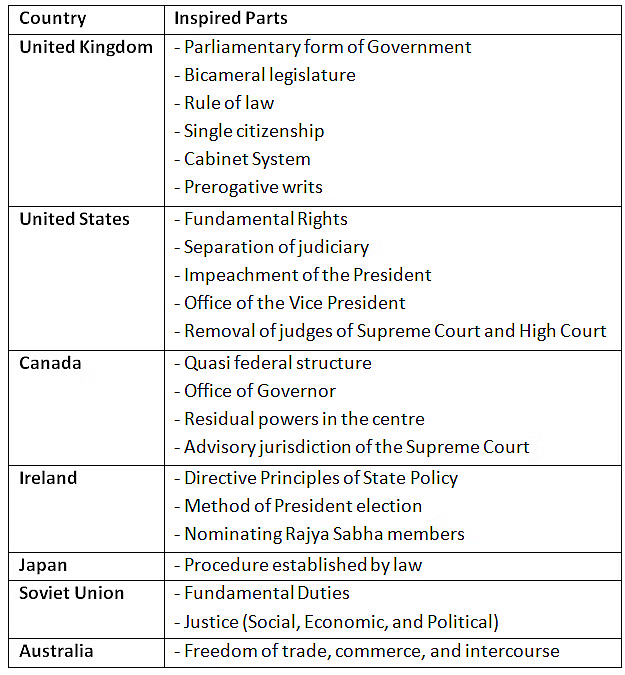
Most Important Components
Preamble
- We, The People Of India, Solemnly Resolved To Constitute India Into A Sovereign Socialist Secular Democratic Republic and To Secure To All Its Citizens:
- Justice, Social, Economic, and Political;
- Liberty of Thought, Expression, Belief, Faith, and Worship;
- Equality of Status and Of Opportunity;
- And To Promote Among Them All
- Fraternity Assuring The Dignity of The Individual and The Unity and Integrity of The Nation;
- In Our Constituent Assembly This 26th Day of November, 1949, Do Hereby Adopt, Enact and Give To Ourselves This Constitution.
Fundamental Rights
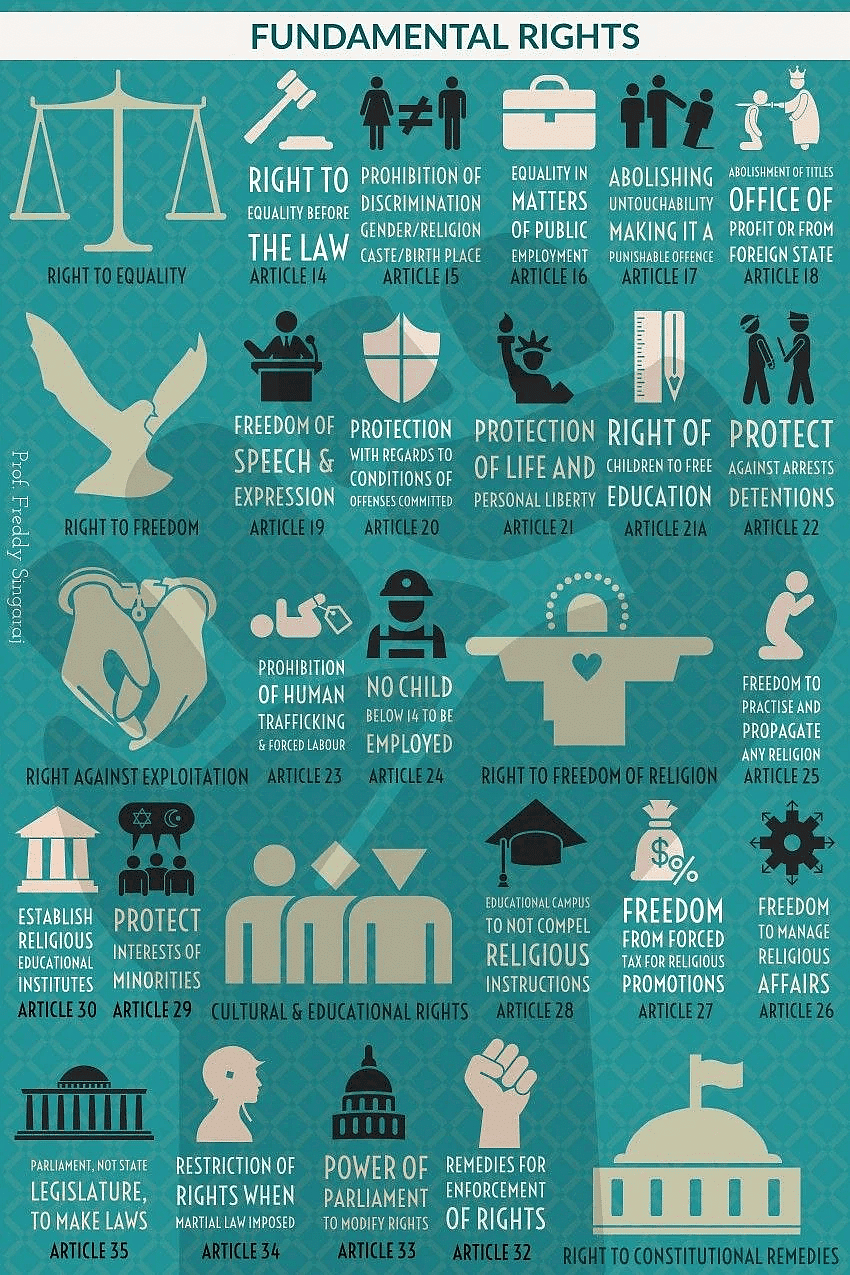
Directive Principles of State Policy
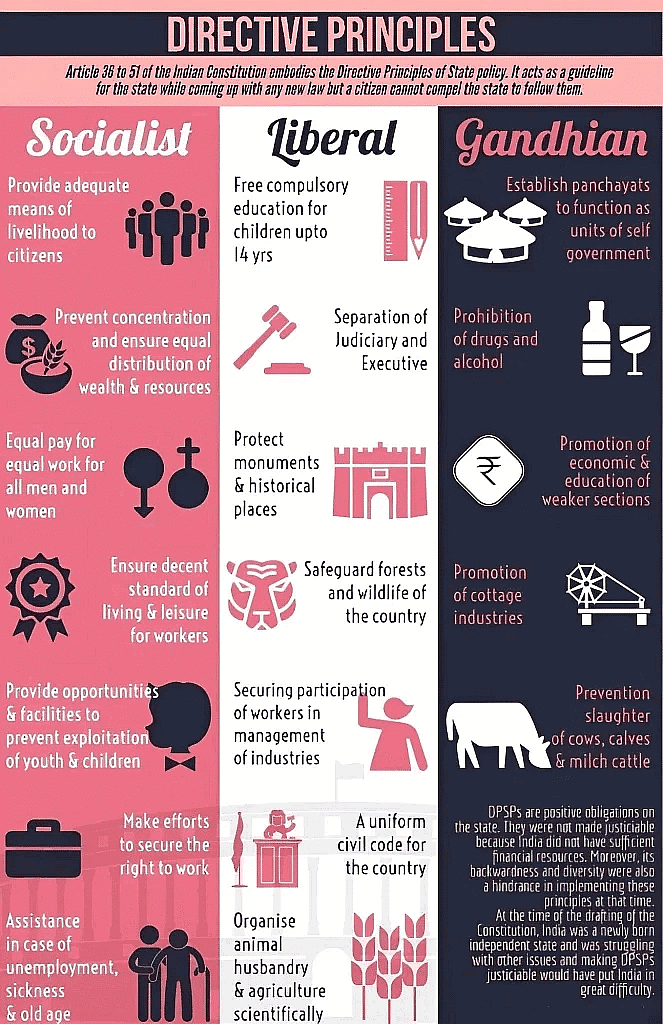
Fundamental Duties
Aadhaar Services Outages
Context
Recently, the Unique Identification Authority of India (UIDAI) has revealed that there was significant outage in Aadhaar authentication services in 2023, raising concerns about the reliability of Aadhaar services.
- There were delays in sending one-time passcodes by SMS, and ‘intermittent’ and ‘minor fluctuations’ in authentication were faced by Aadhaar servers for hours-long periods throughout the year till September 2023, amounting to 54 hours and 33 minutes of disruptions.
What is Aadhaar Authentication?
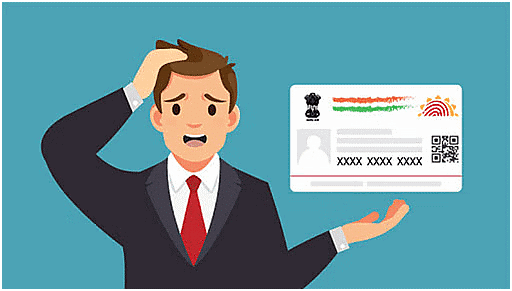
- Aadhaar Authentication Process:
- Aadhaar Authentication involves submitting the Aadhaar number and demographic or biometric information for verification at UIDAI's CIDR.
- UIDAI verifies the accuracy of submitted details based on its information.
- Fundamental Role in Accessing Services:
- Essential for tasks like accessing rations and government services.
- Requires individuals to use fingerprints or SMS passcodes for identity verification.
- Concerns in 2023:
- Prolonged outages in 2023 raise doubts about the overall reliability of Aadhaar services.
- Over 100 billion authentications processed since 2009.
- Implications of Recent Outages:
- Access to Essential Services: Aadhaar authentication denial may result in delayed access to government welfare programs and entitlements, causing potential hardships.
- Impact on Government Programs: Disruptions can affect the efficiency of government initiatives relying on Aadhaar authentication, impacting targeted beneficiaries and overall welfare scheme efficacy.
- Financial Transactions: Hindrance in Aadhaar-enabled services like ATM transactions may impact individuals' daily financial activities and access to banking services.
- Public Trust and Confidence: Repeated outages may diminish public trust in Aadhaar services, affecting confidence in the system's ability to securely manage personal information and ensure smooth service delivery.
Way Forward
- The need for enhanced transparency and accountability in the management of Aadhaar services is critical.
- Transparency is closely tied to public awareness. Individuals have a right to be informed about service disruptions, especially when their access to essential services is affected. Lack of information may impede public participation in addressing and mitigating such challenges.
- The outage highlights the importance of strengthening the technical infrastructure of Aadhaar to ensure its long-term systemic resilience.
- This involves not only addressing immediate issues but also proactively investing in technology, cybersecurity, and continuous monitoring to prevent future disruptions.
Electoral Trusts Scheme, 2013
Context
Recently, Supreme Court has reserved its judgment on the challenge to the central government’s Electoral Bonds Scheme.
- Before the introduction of the Electoral Bonds (EB) Scheme in 2018, another scheme for Electoral funding called Electoral Trusts (ET) Scheme, was introduced in 2013.
What is Electoral Trusts Scheme?
About
- The Electoral Trusts Scheme, 2013, was officially notified by the Central Board of Direct Taxes (CBDT).
- An Electoral Trust is a Trust established by companies with the exclusive aim of disbursing contributions received from other companies and individuals to political parties.
- Only companies registered under Section 25 of the Companies Act, 1956, are qualified to apply for approval as an Electoral Trust, and they must renew their application every three financial years.
- The scheme outlines a procedure for granting approval to an electoral trust, allowing it to receive voluntary contributions and distribute them to political parties.
- Provisions pertaining to electoral trusts are specified under the Income-tax Act, 1961, and the Income Tax Rules-1962.
Contributions to Electoral Trusts
- They may receive contributions from:
- An individual who is a citizen of India
- A company registered in India
- A firm or Hindu undivided family or an Association of persons or a body of individuals, resident in India.
- They shall not accept contributions from:
- An individual who is not a citizen of India or from any foreign entity whether incorporated or not;
- Any other electoral trust registered under the scheme.
Mechanism for Distribution of Funds
- For administrative expenses, the Electoral Trusts are permitted to set aside a maximum of 5% of the total funds collected during a financial year.
- The remaining 95% of total income of the Trusts is required to be distributed to eligible political parties.
- Parties registered under the Representation of the People Act, 1951 are eligible to receive the contributions.
- Electoral trust are required to keep and maintain books of account including details of receipts, distribution and list of donors and receivers.
Audit of Accounts of Electoral Trusts
- Every electoral trust is required to get its accounts audited by an accountant and furnish the audit report to the Commissioner of Income-tax or the Director of Income-tax.
How is Electoral Trust Scheme different from Electoral Bonds Scheme?
- Transparency and Accountability:
- The functioning of ETs is marked by transparency. Contributors and beneficiaries are disclosed.
- Electoral Trusts adhere to a robust reporting system, submitting detailed annual contribution reports to the Election Commission of India (ECI). This ensures a comprehensive record of donations and their allocation.
- On the other hand, the EB Scheme introduces a significant lack of transparency.
- The anonymity of donors creates an opaque environment in the funding process, making it challenging to trace the origins of contributions.
- Funding Trends (2013-14 to 2021-22):
- Data from nine financial years (2013-14 to 2021-22) show that political funding through the two government schemes shot up after the introduction of EBs, with the bulk of donations coming through the EB scheme.
- Between 2017-18 and 2021-22, political parties got a total Rs 1,631 crore through ETs, while Rs 9,208 crore was donated through EBs.
- Political Party Receipts:
- As per a report by the Association for Democratic Reforms (ADR), a single political party has secured 72% of the total donations facilitated by ETs in the year 2021-22 and 57% of the funding through EBs from 2013-14 to 2021-22.
- The report also found that more than 55% of the funding for political parties came through EBs.
Extension of Pradhan Mantri Garib Kalyan Anna Yojana
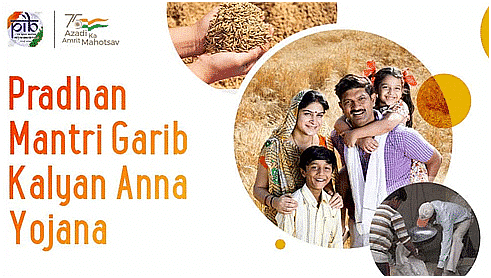
Context
PM announced the extension of the free-food grain program for 80 crore people for an additional five years from January 2024 to December 2028.
Previously, PMGKAY was launched in 2020 as a pandemic relief measure initially set to conclude on December 31, 2023. Later, this year, a scheme with the same name was launched to provide free-of-cost food grains for a year under the National Food Security Act (NFSA), 2013. Now it has been extended till 2028. 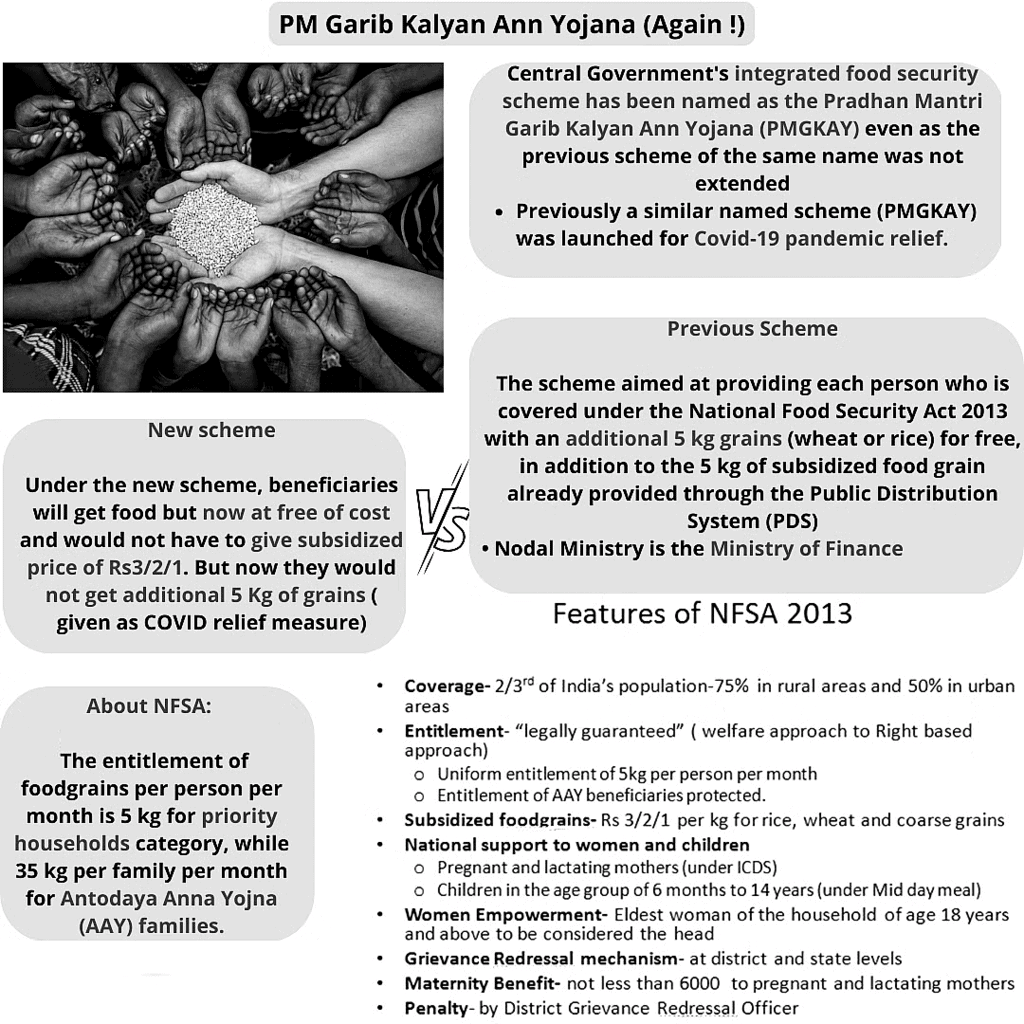
Transit Anticipatory Bail

Context
In a recent ruling (2023), the Supreme Court of India, in the matter of Priya Indoria vs State of Karnataka and Ors, held that a Sessions Court or the High Court within a state has the authority to provide transit anticipatory bail to an accused even if the First Information Report (FIR) is filed outside their jurisdiction.
- The SC emphasizes the constitutional imperative of protecting citizens' right to life and personal liberty as enshrined in Article 21 of the Constitution of India.
What is the SC’s Ruling on Transit Anticipatory Bail?
- SC rules that the High Court/Sessions Courts should grant transit anticipatory bail in the form of interim protection under Section 438 of the Code Of Criminal Procedure (CrPC), 1973 in the interest of justice concerning FIR registered outside the territorial jurisdiction of the said court,
- SC highlighted that an absolute bar on jurisdiction could lead to unjust consequences, especially for bona fide(genuine) applicants facing wrongful, mala fide, or politically motivated prosecution.
- The SC noted transit anticipatory bail should be granted in "exceptional and compelling circumstances only" to prevent irreparable harm to the applicant.
- The SC Laid Down Conditions for Interim Protection:
- Notice to the investigating officer and public prosecutor is mandatory during the first hearing.
- The order granting limited relief must explicitly record reasons explaining why the applicant anticipates an inter-state arrest and the potential impact of such protection on the ongoing investigation.
- The applicant must satisfy the court regarding their inability to seek anticipatory bail from the court with territorial jurisdiction over the FIR.
- The satisfaction could be based on apprehension of threats to life or personal liberty in the jurisdiction where the FIR is registered, concerns about arbitrariness, or medical reasons.
- The ruling acknowledges the possibility of accused individuals choosing a favourable court for interim protection.
- To prevent abuse, the court highlights the importance of a territorial connection between the accused and the court's jurisdiction.
Uttarkashi Tunnel Collapse
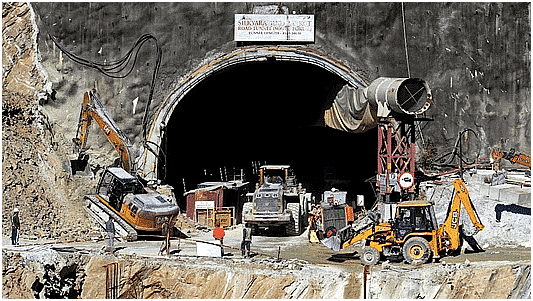
Context
- An under-construction tunnel in northern Uttarakhand collapsed.
About Silkyara- Barkot Tunnel Project
- Silkyara Tunnel (or Silkyara- Barkot tunnel) is located on the Uttarkashi-Yamnotri road.
- The tunnel is a part of the Char Dham all-weather road project which commenced in 2016. The Rs 12,000-crore highway expansion project in Uttarakhand is a flagship initiative of the Centre.
- Build by: NHIDCL through Navyuga Engineering Company.
- Cost of the project: 853 crore.
- Tunnel length: 4.5 km
- The tunnel aims to reduce the distance between Gangotri and Yamunotri from 26 km to 4.1 km.
About the Char Dham Project
- The Chardham Pariyojana aims to enhance connectivity to the pilgrimage centers of Badrinath, Kedarnath, Gangotri, and Yamunotri in the Himalayas, ensuring safer, faster, and more convenient journeys.
- The project involves widening approximately 900 km of highways that link the pilgrimage sites and the Tanakpur-Pithoragarh stretch of National Highway 125, a segment of the Kailash Mansarovar Yatra route.
- Uttarakhand's four major shrines, namely Badrinath, Kedarnath, Gangotri, and Yamunotri, located in the upper Himalayas, will be covered by widening 889 km of hill roads under the Char Dham project.
- These improved roads can serve as strategic feeder routes connecting the India-China border to Army camps in Dehradun and Meerut, housing missile bases and heavy machinery.
- The implementation of the project involves collaboration among key agencies, namely the Uttarakhand State Public Works Department (PWD), Border Roads Organisation (BRO), and the National Highway & Infrastructure Development Corporation Limited (NHIDCL).
- Notably, NHIDCL operates as a fully owned company under the Ministry of Road Transport & Highways, overseeing the development and execution of the project.
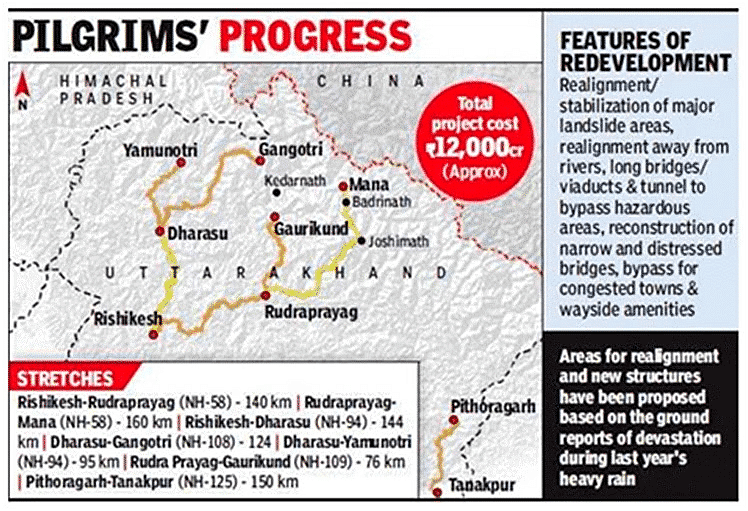
|
122 videos|947 docs|37 tests
|
FAQs on Indian Polity: November 2023 Current Affairs - Current Affairs & General Knowledge - CLAT
| 1. What is the significance of Postal Ballots and EVM in Indian elections? |  |
| 2. What is the Special Category Status and why is it important? |  |
| 3. What is Aadhaar Services Outages and how does it impact the general public? |  |
| 4. What is the Electoral Trusts Scheme, 2013 and how does it influence political funding in India? |  |
| 5. What is the Pradhan Mantri Garib Kalyan Anna Yojana and how has it been extended? |  |
















